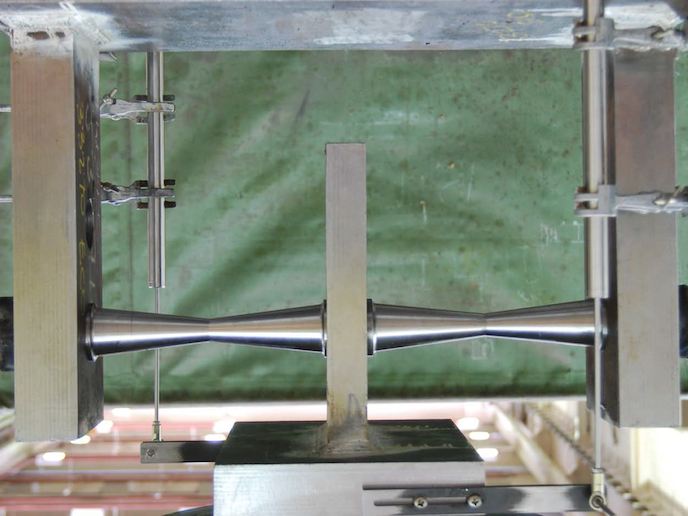This steel hourglass can give earthquake-hit buildings more time
When an earthquake hits, most people will simply be relieved that their home or office is left standing. But more often than not, people cannot return to these buildings, which are destined to be demolished. “When an earthquake is over, the building not in its original position, it’s deformed,” explains George Vasdravellis, Associate Professor at Heriot-Watt University(opens in new window) and CBF-EQRES principal researcher. This deformation, known as residual displacement, is very difficult to repair with conventional techniques. If the pillars supporting a building are skewed even 0.5 % to the vertical, it’s typically cheaper to rebuild than repair. That reconstruction takes time, which leaves people homeless and infrastructure diminished for months or years after the last tremors are felt. Vasdravellis is working on a novel type of bracing that can keep buildings intact and help cities recover faster after earthquakes. His team at Heriot-Watt University in the United Kingdom, with support from the EU through the CBF-EQRES project, developed a technique using hourglass-shaped stainless steel pins. These are connected to the cross-braces that stiffen the metal supporting frames of modern buildings. These stainless steel pins remain stiff even when they suffer forces strong enough to deform them, and are resistant to shattering. That allows them to bend during an earthquake, dissipating energy that would otherwise be exerted on the steel frame itself. More importantly, they minimise the residual deformations of the building, making the repair process much easier. After a seismic event, the sacrificial pins can easily be replaced, readying the building to resist future earthquakes. “The repair process is very easy. They are cylindrical, you simply pull them out through holes in the wall and put in new ones,” says Vasdravellis. Vasdravellis and his colleagues tested different shapes for the pins in the lab before settling on the hourglass design. He hopes the pins will be incorporated into EU building codes(opens in new window) for seismically active areas. Roughly one third of Europe is at risk of destructive earthquakes, concentrated in the south-east across the Balkans, Greece and Italy(opens in new window). Although codes in the EU are only updated every decade, some earthquake-prone countries such as New Zealand fast-track innovative designs. This research conducted in the CBF-EQRES project was supported by the Marie Skłodowska-Curie programme. “With this grant I worked with a very good postdoctoral fellow for 2 years, Guido Bregoli, who has done brilliant work,” says Vasdravellis. “Significant contribution also came from Marco Baiguera.” He adds that the funding also provided essential lab equipment. Through the grant, Vasdravellis was also able to progress on a similar device that reduces the risk of collapse in buildings that experience sudden acute damage, such as the loss of support columns in a bombing. Vasdravellis says that he was attracted to the issue of residual drift as it was “an open problem” in seismic-resistant design. He adds: “Myself, I’m from Greece, so I have personal interest in improving earthquake-resistant buildings.”







